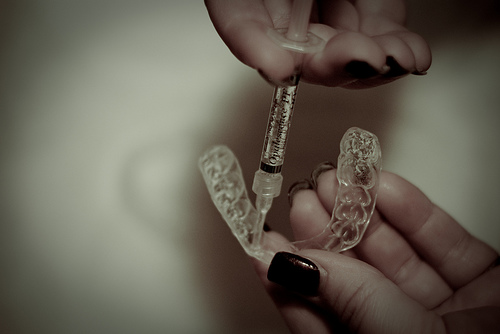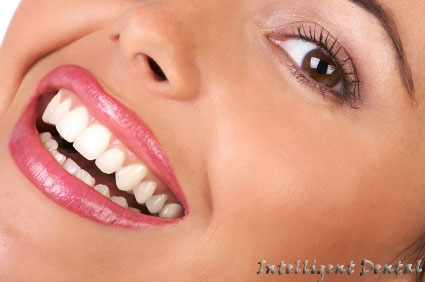Tooth whitening has become increasingly popular over the years as people begin to be more conscious of their appearance and yearn to have a ‘Hollywood smile’. Tooth whitening is basically a cosmetic procedure to decolorize or whiten one’s tooth/teeth with the usage of whitening or bleaching products. In order to achieve whiter teeth, one needs to fully understand the type of tooth discoloration or staining involved as this helps dictate the best and most conservative approach.
Common Types and Causes of Tooth Discoloration
With age, our teeth tend to turn more yellow as they get worn out with function (chewing, grinding), leading to the thinning of enamel which allows the underlying dentine to show through. But this is not tooth staining per se, as it is a natural process. A way in which the wearing dentition can produce ‘true staining’ is when stains get incorporated into the fine crack or craze lines on our teeth, making it difficult to remove with conventional tooth brushing.
There are two broad types of discoloration extrinsic staining and intrinsic staining:
- Extrinsic staining involves the outer surface of the tooth, caused by the adherence of colored substances such as betel nut, coke, and tobacco.
- Intrinsic staining reflects structural changes in/within the tooth itself, which is harder to treat. This can involve both the pre- and post- eruptive dentition. Contributing factors include metabolic or systemic diseases, drugs, chemicals and trauma.
To know more about the causes of yellow teeth or tooth discoloration, click here.
Treatment options
Once the cause of discoloration is established and bleaching is deemed the most suitable, one needs to then decide which approach to follow. There are three general methods in achieving whiter teeth, namely, in-office or chair-side bleaching, night guard bleaching under professional supervision and over the counter bleaching products.
In-office or professional bleaching is performed by dentist either extracoronally or intracoronally. This option usually requires multiple appointments, more costly and depending on the procedure chosen, one may experience significant whitening after just one appointment. This is because the concentration of bleaching material (hydrogen peroxide/sodium perborate/carbamide peroxide) is higher when compared to other methods. Other reinforcements such as heat or laser teeth whitening may also be used to improve results.
Night guard bleaching involves both the dentist and patient, where a custom made plastic mould filled with bleaching gel of low concentration is worn overnight for a few weeks. Although this method requires fewer appointments, the patient needs to be fairly compliant to achieve maximum results. This method is relatively cheaper when compared to in-office bleaching and is said to be the most effective and safest method.

Night guard bleaching (Picture by GiggleManiac, Flickr)
Over the counter bleaching products are chosen by the patient with little to no involvement from the dentist. They are vastly available in the market, ranging from basic whitening toothpastes to meticulous home whitening systems or kits with self applied whitening gels, whitening paints, whitening strips or commercial whitening trays. They contained the lowest concentration of bleach. While this is the cheapest tooth whitening method, it has the most unpredictable results and is of low effectiveness, especially on teeth with deep profound stains.
Things you need to know about dental bleaching
Whitening results vary between individuals but one can usually expect an improvement of at least two shades, and some people more. It is important to bear in mind that our teeth can only lighten to a specific amount, not everyone will be able to achieve their desired level of whiteness, despite prolonged treatment. A younger person usually responds better to bleaching treatment compared to older counterparts due to their less worn dentition.
Bleaching materials may affect tooth colored (composite resin or glass ionomer cement) fillings by breaking down its bond to tooth structure. Depending on the material used, it may cause degradation of porcelain crowns or bridge work. It also does not ‘bleach’ dental fillings and this may pose a color disparity problem, especially when labial surface (tooth aspect facing lip) of front tooth is involved. Some restorative work may need to be replaced post-bleaching.
Most people generally experience sensitive teeth post-bleaching but this generally only lasts for a few days, except where continuous bleaching is involved. In a small amount of people, the sensitivity may persist or is increased, which may warrant further treatment.
Successfully whitened teeth also require careful maintenance from the patient’s part as bleaching does not make the teeth any less prone to discoloration. If any, the cause of discoloration should be removed or managed appropriately in order to preserve the results for a longer period.
Useful tips to care for your pearly whites include:
- Brushing at least twice a day and also after meals if possible to remove any food/debris/plaque build up on teeth which increase retention of colored substance on tooth surface. Teeth should also be brushed before bleaching attempts.
- Avoid food or drinks with a lot of colorings (tea/coke) and if you have to, swish plain water around your mouth after to dilute it. Try to drink with a straw as it directs the colored substance straight down with minimal teeth contact, and do not swish colored drinks around mouth.


Pingback: Endodontic Treatment - What, Why and How? | Intelligent Dental
Pingback: Teeth Whitening: Laser Teeth Whitening | Intelligent Dental
Pingback: Laser teeth whitening in Sydney Australia and Melbourne Australia | Intelligent Dental
Pingback: Zoom Teeth Whitening System | Intelligent Dental
Pingback: Your guide to home tooth whitening | Intelligent Dental
Pingback: Revival entry, hopefully « s0hp0h (。◕‿◕。)
Pingback: All about tooth sensitivity: Part 1 | Intelligent Dental
One of the best ways to avoid teeth discoloration is to regularly brush your teeth three times a day, every after meal.